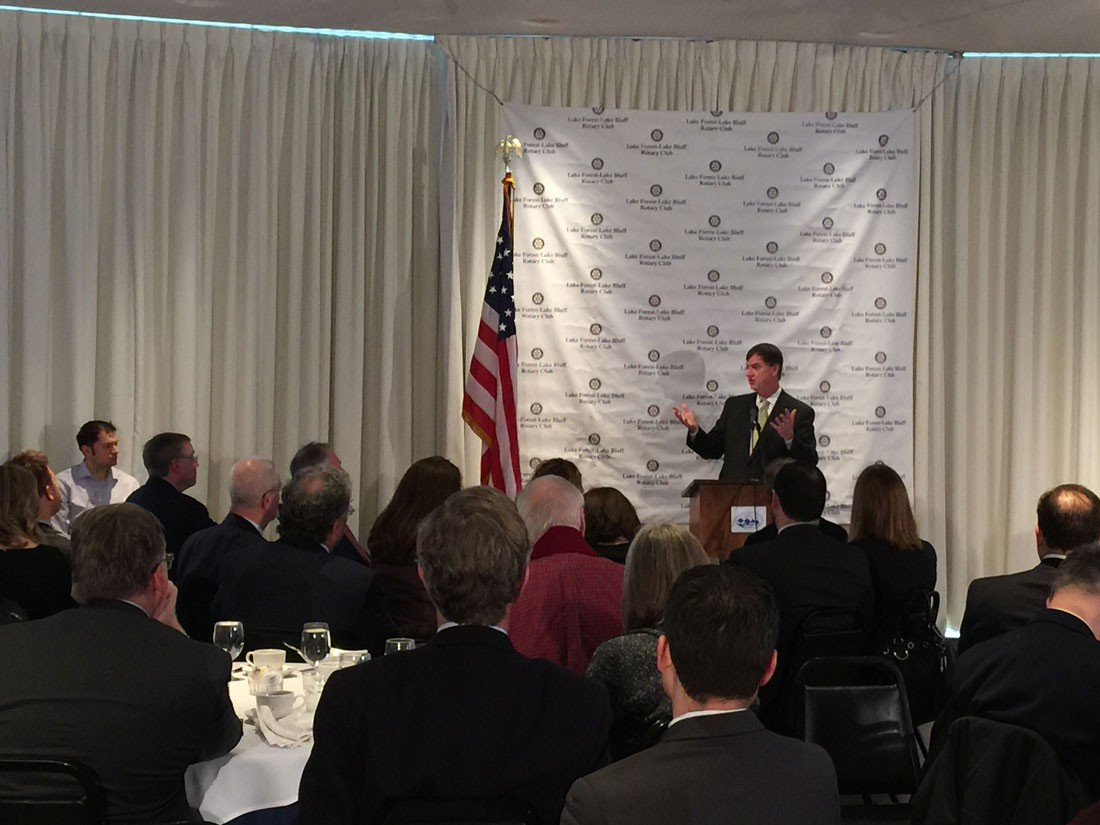By Lucy Ren
Charles Evans, president of the Federal Reserve Bank of Chicago, said the Fed should “hold off on raising short–term rates until 2016” in order to achieve the 2 percent inflation objective.
What’s PCE?
The Personal Consumption Expenditures price index, as the principle measure of inflation favored by Evans, is compiled by measuring the costs of goods and services that consumers purchase on a daily basis.
“Inflation is too low,” said Evans at the 2015 Economic Breakfast in Lake Forest, Ill. on Wednesday. He stated that the Federal Open Market Committee should “refrain from raising the federal funds rate until conditions indicate much greater confidence in forecasts of inflation getting to 2 percent in a year or two.”
Evans holds a vote this year on the rate-setting FOMC. In FOMC’s latest projections made in December, only two out of the 17 participants held that it would be appropriate to raise rates after this year.
Federal Reserve Chairwoman Janet Yellen reiterated the “patient” guidance for a future interest rate hike in her testimony before Congress last week.
[field name=”pcepriceindex”]
Since 2012, the FOMC has set an explicit longer-run goal for inflation of 2 percent as measured by the year-over-year rate of change in the Price Index for Personal Consumption Expenditures. “Currently, core PCE inflation is 1.3 percent compared with a year ago,” Evans noted.
Evans argued that there is “no compelling reason” to “tighten financial conditions” before the target has been reached.
[field name=”audioembed”]
Evans predicted that even with the delay in raising the short-term interest rate, the U.S. economy “will not actually achieve 2 percent inflation until 2018.” He said the rise in inflation will be “at a woefully gradual pace.”

“We’ve been under-running for six years,” Evans noted as he reiterated the importance of achieving the inflation target. He declared that “prolonged and significant deviations of actual inflation from what consumers and businesses are expecting” could impose significant costs to the economy as people make long-term investment decisions.
“I think it’s an important credibility issue that we get up to 2 percent within a reasonable period of time,” Evans said during a question-and-answer session after the speech. “If we were to get stuck below 2 percent, then people would start to question whether or not 2 percent is actually our object. And that would have negative implications for interest rate, lending and resources allocation.”
Related Stories
Evans estimates the longer-run normal rate of unemployment to fall to 5 percent, 0.2 to 0.5 percentage point lower than most FOMC participants’ estimation last December.
Evans said he would be “confident that inflation is heading higher” when he sees “a pickup in the year-over-year rate of change in the price index,” “stronger growth in wages and other forms of labor compensation” and more optimistic inflation expectations, specifically, when “more evidence that the public and financial markets expect that inflation will be rising” with the Fed’s objective.
[field name=”labor”]
Evans pointed out that the financial market participants “expect the pace of rate increases to be even slower than FOMC participants do.” He recalled the most recent reading on market expectations to be “a bit above 1 percent” at the end of 2016, “a full percentage point below the median FOMC forecast,” he added.
[field name=”comment”]
Evans said he “simply does not see high costs” to the scenario of “waiting too long to raise the short-term interest rate,” and subsequently, “inflation picking up faster than we now expect.” He opined that even if the Fed overshot the target, it would still have “ample time to address the problem with moderate increases in interest rates” given the “inertia in inflation.”
Evans said the dramatic decline in oil prices and the appreciation of the dollar can be “positive developments for U.S. economic activity,” but if the lower pricing “gets embedded more persistently,” the 2 percent target for inflation would be harder to reach because the weaker pricing could lower “longer-run inflationary expectations.”

